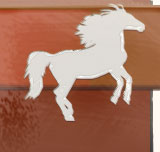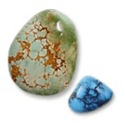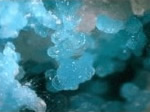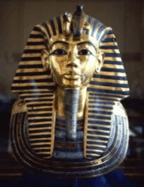
In This Issue: |
 In this issue, we talk about turquoise. Personally, I have worn an old turquoise bracelet, made around 1900, for the last 15 years. It is a handmade piece. For me, it supports speaking the truth of my heart and being able to see the vision of my soul....when I slow down enough to do so. I decided to provide more details to indicate that the sacred use of stones permeates all spiritual paths. Various civilizations and religions from around the world have incorporated the beauty and energy of turquoise into their ceremonial instruments, and garments. The only workshop I have scheduled for this year is the visioning workshop July 31- August 3. Details are below. I hope you find something in this newsletter that talks to your soul. If so, please send it along to someone that might be interested. Bountiful Blessings xxxxxxxxxxxxxxxxxxxxxxxxxxxxxxxxxxxxxxxxxxxxxxxxxxxxxxxxxxxxxxxxxxx Stones Turquoise1
The substance has been known by many names, but the word turquoise was derived around 16th century from the French language either from the word for Turkish (Turquoise) or dark-blue stone (pierre turquin). This may have arisen from a misconception: turquoise does not occur in Turkey but was traded at Turkish bazaars to Venetian merchants who brought it to Europe. The color, however, has been employed extensively in the decorative tiles adorning Turkish places of worship and homes for hundreds of years, beginning with the Seljuks, or was derived from the color of the Mediterranean Sea on the southern Turkish coast and the association quite possibly has caused the name to take root. Spiritual Applications Melody notes that it is another gift from the Earth, bringing the blue of Father Sky to the Earth and melding together the energies of the heavens with the consciousness of the Mother Earth. It strengthens and aligns all chakras, meridians, and subtle bodies. It actually elevates all chakras and can facilitate attunement between the physical level and the higher planes of existence. It can bring any and all energies to a higher level. It does, however, primarily stimulate the throat, heart, and naval chakras, bringing communication skills to emotional issues, to creativity, and to intuition, while allowing for the application of love in all issues.
It is valuable for grounding and can help to prevent one from losing touch with the conscious mind during deep meditation; this facilitates a no mind meditative state, but provides the unconscious mind with a knowing of the protective mechanism which has been initialed. It can be used for attunement between those of the physical plane, as well as between one and the spirit world. It is valuable to provide strength and protection during vision quests and astral travel. It is of high spirituality and can bring both valor and protection on the spiritual level, and from the etheric plane. It is a stone of "Earth-grounding"; hence one can remain grounded during spiritual work. It acts to improve meditation and to further peace of mind. It is a healer of spirit, providing for a soothing energy and bringing peace of mind. It has also been known to guide one through the unknown, protecting while promoting ones independence in action.
It can be used to balance the male/female aspects of ones character, bringing forth the qualities of mental clarity and spiritual clarity, and providing for the balancing of energies. It also provides for a bit of an increase in one's psychic powers, and can help one to develop ones natural powers. It is said to assist one in communication activities, both written and oral, such that, that which is relayed to others is direct and correct. It acts to induce wisdom and understanding, and to enhance trust, kindness, and the recognition of beauty. It is said to promote spontaneity in issues of romance and to stimulate the initiation of romantic love. It has been used extensively in cloud-busting (rain); it has also been used by Native American shamans to initiate rain by throwing the stone in a river or holding it under running water. It is a master healer, emanating a purifying energy which tends to dissipate negativity; it is an excellent anti-negativity stone (where it is not within the self). It can be used for emotional, mental, and physical problems. In ancient times, it was used to heal eye problems such as cataracts. It has been used to strengthen work animals. It acts to strengthen the entire anatomy, and can be helpful in the amelioration of all dis-eases and disorders. It can aid in the absorption of nutrients, can help to stimulate the regeneration of tissue, and can act to increase circulatory flows to the muscular tissues. It has been used in the treatment for headaches and in the repair of physical damage which has impacted the body. It has been used to assist one in maintaining stability during ambulatory motions. An elixir has been used to ameliorate skin disorders which were due to stress. To facilitate the properties, it may be held for attunement, taken as an elixir, worn, carried, or placed in ones environment. The turquoise crystals provide a doubling effect of the properties and produce a total polarization of the physical with the subtle bodies. Michael's Gemstone Dictionary notes that it centers one's being on Love and connectedness with others. It pulls one into the experience of unconditional Love for all beings. It balances the Higher-Emotional center and connects one with the energy of the messianic plane. Historical Uses
The Aztecs inlaid turquoise, together with gold, quartz, malachite, jet, jade, coral, and shells, into provocative (and presumably ceremonial) mosaic objects such as masks (some with a human skull as their base), knives, and shields. Natural resins, bitumen and wax were used to bond the turquoise to the objects' base material; this was usually wood, but bone and shell were also used. Like the Aztecs, the Pueblo, Navajo and Apache tribes cherished turquoise for its amuletic use; the latter tribe believe the stone to afford the archer dead aim. Among these peoples turquoise was used in mosaic inlay, in sculptural works, and was fashioned into toroidal beads and freeform pendants. The Ancestral Puebloans (Anasazi) of the Chaco Canyon and surrounding region are believed to have prospered greatly from their production and trading of turquoise objects. The distinctive silver jewelry produced by the Navajo and other Southwestern Native American tribes today is a rather modern development, thought to date from circa 1880 as a result of European influences. In Persia, turquoise was the de facto national stone for millennia, extensively used to decorate objects (from turbans to bridles), mosques, and other important buildings both inside and out, such as the Medresseh-I Shah Husein Mosque of Isfahan. The Persian style and use of turquoise was later brought to India following the establishment of the Mughal Empire there, its influence seen in high purity gold jewelry (together with ruby and diamond) and in such buildings as the Taj Mahal. Persian turquoise was often engraved with devotional words in Arabic script which was then inlaid with gold. Cabochons of imported turquoise, along with coral, was (and still is) used extensively in the silver and gold jewelry of Tibet and Mongolia, where a greener hue is said to be preferred. Most of the pieces made today, with turquoise usually roughly polished into irregular cabochons set simply in silver, are meant for inexpensive export to Western markets and are probably not accurate representations of the original style. The Egyptian use of turquoise stretches back as far as the First Dynasty and possibly earlier; however, probably the most well-known pieces incorporating the gem are those recovered from Tutankhamun's tomb, most notably the Pharaoh's iconic burial mask which was liberally inlaid with the stone. It also adorned rings and great sweeping necklaces called pectorals. Set in gold, the gem was fashioned into beads, used as inlay, and often carved in a scarab motif, accompanied by carnelian, lapis lazuli, and in later pieces, colored glass. Turquoise, associated with the goddess Hathor, was so liked by the Ancient Egyptians that it became (arguably) the first gemstone to be imitated, the fair semblance created by an artificial glazed ceramic product known as faience. (A similar blue ceramic has been recovered from Bronze Age burial sites in the British Isles.) The French conducted archaeological excavations of Egypt from the mid-19th century through the early 20th. These excavations, including that of Tutankhamun's tomb, created great public interest in the western world, subsequently influencing jewelry, architecture, and art of the time. Turquoise, already favored for its pastel shades since c. 1810, was a staple of Egyptian Revival pieces. In contemporary Western use, turquoise is most often encountered cut en cabochon in silver rings, bracelets, often in the Native American style, or as tumbled or roughly hewn beads in chunky necklaces. Lesser material may be carved into fetishes, such as those crafted by the Zuni. While strong sky blues remain superior in value, mottled green and yellowish material is popular with artisans. In Western culture, turquoise is also the traditional birthstone for those born in the month of December. In Judeo-Christian scripture Turquoise may have significance in Judeo-Christian scripture: In the Book of Exodus, the construction of a "breastplate of judgment" is described as part of the priestly vestments of Aaron (Exodus 28:15–30). Attached to the ephod, the breastplate (Hoshen) was adorned with twelve gemstones set in gold and arranged in four rows, each stone engraved with the name of one of the Twelve Tribes of Israel. Of the four stones in the third row, the first and second have been translated to be turquoise by various scholars and English bible versions (usually not having both as turquoise at the same time); many others disagree, however. In regard to the first of these stones, the translation is based on the Septuagint rendering the identity of the stone as chrysolithos (the masoretic text calls it tarshish, which just refers to Tarshish, a place, and gives no clue to the gem in question); at the time it was written chrysolithos did not mean Chrysolite specifically, but only golden stone (chryso-lithos). Chrysolithos is considered by scholars to possibly mean Topaz, Chrysolite, yellow Jasper, yellow Serpentine, or Turquoise - the last of these on the basis that Turquoise contains golden flecks, and that targums identified the stone as being sea colored. Scholars favor stones which are mostly yellow as being the more likely solution, and opaque stones (Jasper or Serpentine) as more likely than translucent ones, on the consideration of nearby stones in the Hoshen. In regard to the second of these stones, the masoretic text calls it shoham, and the Septuagint calls it Beryllios (Beryl), though elsewhere it translates shoham as onychion (Onyx), or as smaragdos (green stone). Shoham is of uncertain meaning. Following the Septuagint, some people think the stone should be an onyx (and many more traditional English versions of the Bible take this translation), but scholars think that the stone is actually Malachite (because it is green like beryl and smaragdos, cloudy as beryl can be, and in bands like onyx). Scholars also disagree as to which tribes of the Israelites each stone is meant to represent; traditional sources are in just as much disagreement.
xxxxxxxxxxxxxxxxxxxxxxxxxxxxxxxxxxxxxxxxxxxxxxxxxxxxxxxxxxxxxxxxxxx Workshops We will be doing Questing for a Vision July 31 - August 3, 2008 at our farm in Novelty, Ohio. Contact me directly about this program at onehorsestanding@aol.com. Some details are below. xxxxxxxxxxxxxxxxxxxxxxxxxxxxxxxxxxxxxxxxxxxxxxxxxxxxxxxxxxxxxxxxxxx Questing fo a Vision July 31 - August 3, 2008 Vision questing was originally known as crying or lamenting for a vision. It involved going into seclusion on a mountain or sacred site without food or water or clothes. Stripped to the nakedness of oneself, the individual sat in total humility waiting for a vision of how the world is different because the individual exists. Questing for a Vision workshop is about learning to listen to who we are more fully as a person. What to Expect: Who Should Come: What to Bring: Sign up or read more about Vision Questing on our website. xxxxxxxxxxxxxxxxxxxxxxxxxxxxxxxxxxxxxxxxxxxxxxxxxxxxxxxxxxxxxxxxxxx Find out more about workshops, retreats, and resources at www.onewhitehorsestanding.com. Notice This is a shamanic newsletter and is intended only for educational and informational purposes. Any person needing therapeutic support should contact a mental health professional immediately.
|
 Turquoise is an opaque, blue-to-green mineral that is a hydrous phosphate of copper and aluminum, with the chemical formula CuAl6(PO4)4(OH)84H2O. It is rare and valuable in finer grades and has been prized as a gem and ornamental stone for thousands of years owing to its unique hue. In recent times turquoise, like most other opaque gems, has been devalued by the introduction of treatments, imitations, and synthetics onto the market, some difficult to detect even by experts.
Turquoise is an opaque, blue-to-green mineral that is a hydrous phosphate of copper and aluminum, with the chemical formula CuAl6(PO4)4(OH)84H2O. It is rare and valuable in finer grades and has been prized as a gem and ornamental stone for thousands of years owing to its unique hue. In recent times turquoise, like most other opaque gems, has been devalued by the introduction of treatments, imitations, and synthetics onto the market, some difficult to detect even by experts. It is excellent for spiritual attunement, for healing and cleansing of both the energy centers and the physical body, and for providing protection. It has been said that turquoise changes color to warn of impending danger and/or to indicate infidelity in thought or action. It can be used to protect against environmental pollutants.
It is excellent for spiritual attunement, for healing and cleansing of both the energy centers and the physical body, and for providing protection. It has been said that turquoise changes color to warn of impending danger and/or to indicate infidelity in thought or action. It can be used to protect against environmental pollutants. It was used in ancient times to insure property and to protect against accidents. It has been esteemed by Tibetan shamans as holding both a spiritual and protective property. It has been used in shamanic ceremonies and in the sacred valley of shambhala. It has also been considered by the Native Americans to be both a protective stone and a bestower of goodness.
It was used in ancient times to insure property and to protect against accidents. It has been esteemed by Tibetan shamans as holding both a spiritual and protective property. It has been used in shamanic ceremonies and in the sacred valley of shambhala. It has also been considered by the Native Americans to be both a protective stone and a bestower of goodness.  The pastel shades of turquoise have endeared it to many great cultures of antiquity: it has adorned the rulers of Ancient Egypt, the Aztecs (and possibly other Pre-Columbian Mesoamericans), Persia, Mesopotamia, the Indus Valley, and to some extent in ancient China since at least the Shang Dynasty. Despite being one of the oldest gems, probably first introduced to Europe (through Turkey) with other Silk Road novelties, turquoise did not become important as an ornamental stone in the West until the 14th century, following a decline in the Roman Catholic Church's influence which allowed the use of turquoise in secular jewelry. It was apparently unknown in India until the Mughal period, and unknown in Japan until the 18th century. A common belief shared by many of these civilizations held that turquoise possessed certain prophylactic qualities; it was thought to change color with the wearer's health and protect him or her from untoward forces.
The pastel shades of turquoise have endeared it to many great cultures of antiquity: it has adorned the rulers of Ancient Egypt, the Aztecs (and possibly other Pre-Columbian Mesoamericans), Persia, Mesopotamia, the Indus Valley, and to some extent in ancient China since at least the Shang Dynasty. Despite being one of the oldest gems, probably first introduced to Europe (through Turkey) with other Silk Road novelties, turquoise did not become important as an ornamental stone in the West until the 14th century, following a decline in the Roman Catholic Church's influence which allowed the use of turquoise in secular jewelry. It was apparently unknown in India until the Mughal period, and unknown in Japan until the 18th century. A common belief shared by many of these civilizations held that turquoise possessed certain prophylactic qualities; it was thought to change color with the wearer's health and protect him or her from untoward forces.